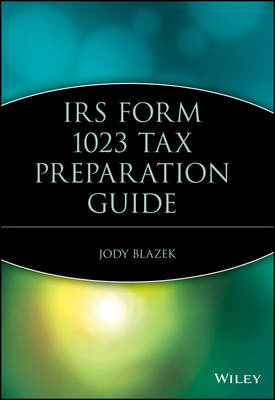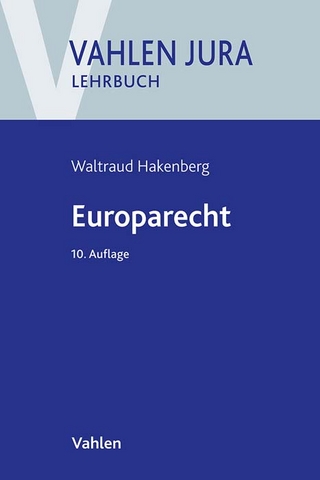
IRS Form 1023 Tax Preparation Guide
John Wiley & Sons Inc (Verlag)
978-0-471-71525-2 (ISBN)
Line-by-line tips and instructions to successfully file Form 1023
IRS Form 1023 Tax Preparation Guide provides comprehensive instructions for completing and filing the new and significantly revised Form 1023 (Application for Recognition of Exemption under Section 501(c)(3) of the Internal Revenue Code).
Nonprofit organizations--including health and human service organizations, schools, private foundations, churches, libraries, museums, cultural institutions, environmental protection organizations, and other charitable, smaller groups--contend daily with issues related to their IRS filings, from qualifying and applying for tax-exempt status to maintaining and managing it. Written for nonprofit executives and directors, accountants, nonprofit boards, lawyers, consultants, and volunteers, IRS Form 1023 Tax Preparation Guide is brimming with helpful advice and features, including:
* Strategies for obtaining IRS recognition of tax-exempt status as a charitable organization including a Suitability Checklist to evaluate viability of making application
* Insights into the rationale behind the information requested by the IRS
* Specific suggestions for answering each question on Form 1023 and navigating the steps involved in the approval process
* Practical advice on the alternatives available in contesting an adverse IRS determination
* An overview of state filing requirements
* A companion Web site that allows nonprofits to download key model forms and connect to IRS forms
* Easy-to-use worksheets to help manage such critical concerns as public charity status, tax-exempt eligibility, reporting to the IRS, and tax compliance
JODY BLAZEK, CPA, is a partner in Blazek & Vetterling LLP, a Houston accounting firm focused on financial services for tax-exempt organizations and the individuals who create, fund, and work for them. She is immediate past chair of the AIPCA Tax-Exempt Resource Panel and heads the Form 990-PF Redesign Task Force. She serves on the editorial board of the Exempt Organization Tax Review and the Tax Advisor. She is a founding director of Texas Accountants and Lawyers for the Arts and the Houston Artist Fund. Blazek's concentration on nonprofits began at KPMG Peat Marwick LLP. She gained industry experience as chief financial officer of the Menil Foundation before forming the firm she now serves. She is the author of Tax Planning and Compliance for Tax-Exempt Organizations, Fourth Edition; Financial Planning for Nonprofit Organizations; IRS Form 990: Tax Preparation Guide for Nonprofits; and Private Foundations: Tax Law and Compliance, Second Edition and The Legal Answer Book for Private Foundations, coauthored with Bruce Hopkins (all published by Wiley).
Preface. Chapter 1. Form 1023: Exemption under IRC §501©(3).
1.1 Before You Begin.
1.2 Suitability Test.
1.3 Statutory Requirements for Exemption.
1.4 Proper Timing.
1.5 Expeditious Handling.
1.6 National Office.
1.7 Organizations That Need Not File.
1.8 Group Exemptions.
1.9 Where to Send Application.
1.10 Public Inspection.
Chapter 2. Line-by-Line Suggestions for Completing Form 1023.
2.1 Part I—Identification of Applicant.
2.2 Part II—Organizational Structure.
2.3 Part III—Information about the Required Provisions in Your Organizing Document.
2.4 Part IV—Narrative Description of Your Activities.
2.5 Part V—Compensation and Other Financial Arrangements with Your Officers, Directors, Trustees, Employees, and Independent Contractors.
2.6 Part VI—Your Members and Other Individuals and Organizations that Receive Benefits from You.
2.7 Part VII—Your History.
2.8 Part VIII—Your Specific Activities.
2.9 Part IX—Financial Data.
2.10—Public Charity Status.
2.11 Part XI—User Fee Information.
Chapter 3. The Schedules.
3.1 Schedule A—Churches.
3.2 Schedule B—Schools, Colleges, and Universities.
3.3 Schedule C—Hospitals and Medical Research Organizations.
3.4 Schedule D—IRC §509(a)(3) Supporting Organizations.
3.5 Schedule E—Organizations Not Filing Form 1023.
3.6 Schedule F—Homes for the Elderly or Handicapped and Low Income Housing.
3.7 Schedule G—Successors to Other Organizations.
3.8 Schedule H—Organizations Providing Scholarships, Fellowships, Educational Loans, or other Educational Grants, and the Like to Individuals.
Chapter 4. Getting a Positive IRS Determination.
4.1 Application Processing System.
4.2 Best Case Scenario.
4.3 When Questions Are Asked.
4.4 Disputed Cases.
4.5 Declaratory Judgment.
Chapter 5. Advances versus Definitive Rulings.
5.1 Definitive Ruling.
5.2 Advanced Ruling.
5.3 Reporting Back to the IRS.
5.4 Failure to Meet Support Tests at End Advance Ruling Period.
5.5 Failure to Subsequently Meet Support Test.
5.6 Changes of Public Charity Status.
Chapter 6. Reliance on Determination Letter.
6.1 Checking Current Status.
6.2 Names Missing from Publication.
6.3 Contact the IRS.
Chapter 7. State Tax Exemptions.
Appendix A: Suitability Checklist.
Appendix B: Form 1023 for a Public Charity.
Appendix C: Form 1023 for a Private Operating Foundation.
Appendix D: Public Support Test Calculation for IRC 170(b)(1)(A)(vi) Organization.
Appendix E: Public Support Test Calculation for IRC 509(a)(2).
Appendix F: The Schedules.
Appendix G: Form 5768, Election/Revocation of Election by an Eligible Section 501©(3) Organization to make Expenditures to Influence Legislation.
Appendix H: Notice 3367, Acknowledgement of Your Request.
Appendix I: Determination Letters Recognizing Exemption.
Appendix J: Chart of State Filing Requirements.
Appendix K: Form 8734, Support Schedule for Advanced Ruling Period.
Appendix L: Compliance Monitoring at the Point of Transaction.
Appendix M: Proposal Methodology for Pat IX.
Index.
| Erscheint lt. Verlag | 27.7.2005 |
|---|---|
| Verlagsort | New York |
| Sprache | englisch |
| Maße | 179 x 257 mm |
| Gewicht | 460 g |
| Themenwelt | Recht / Steuern ► EU / Internationales Recht |
| Recht / Steuern ► Steuern / Steuerrecht | |
| ISBN-10 | 0-471-71525-5 / 0471715255 |
| ISBN-13 | 978-0-471-71525-2 / 9780471715252 |
| Zustand | Neuware |
| Haben Sie eine Frage zum Produkt? |
aus dem Bereich


